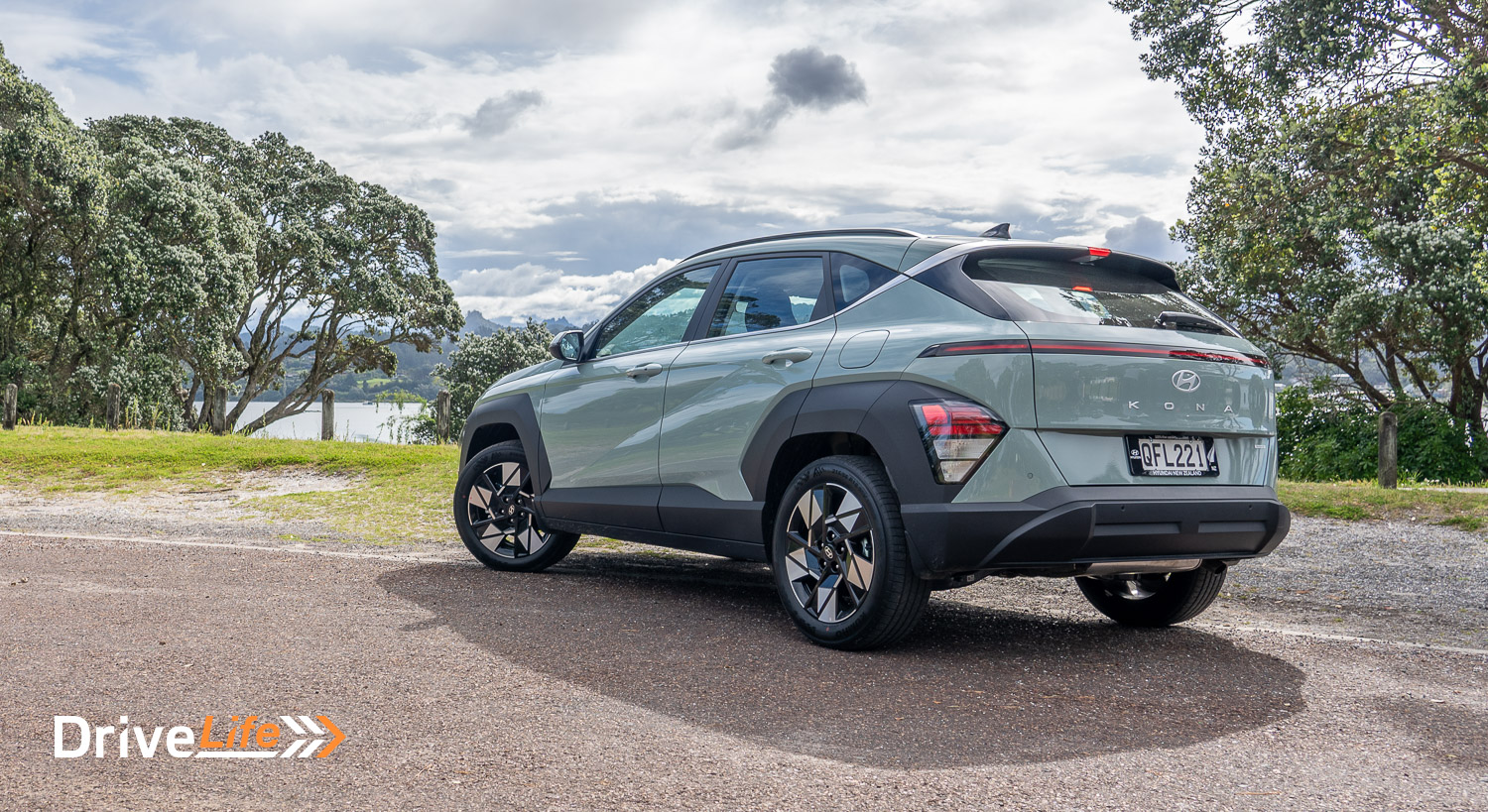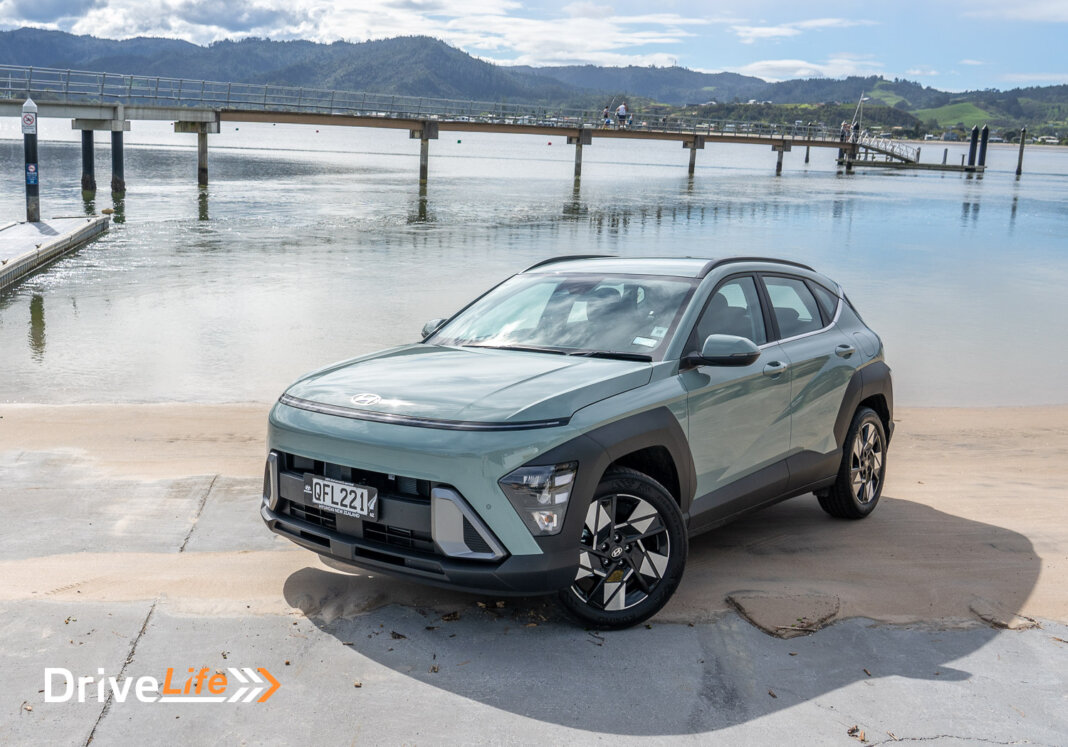It may have only been around since 2017, but the Hyundai Kona has made major waves since its launch. One of the first cars to offer three drivetrains – petrol, hybrid, or EV – it is an impressive compact SUV. Corporates have picked the car up too, and in just 6 short years, the Kona has taken its place in the market.
DriveLife has always enjoyed the Kona; We last reviewed the hybrid model in 2022, and the high-performance Kona N in 2021.
It’s also a large success for Hyundai, and to date, the Kona covers 25% of all Hyundai sales – that’s an impressive number. In fact, in the last two years, the Kona has reached 30% of all Hyundai sales in New Zealand.
Since its launch, over 11,800 have been sold in New Zealand and in the last 12 months, 2,800 of these have been the full EV model and 800 have been hybrid.
We shot to Auckland for the launch and took most models of the new Kona down to Coromandel, and back. In a twist of fate, all flights the next day out of Auckland were cancelled because of fog in Wellington, so Hyundai gave me a low-spec Kona Hybrid to drive back instead. How would the car go driving at night for 600km?
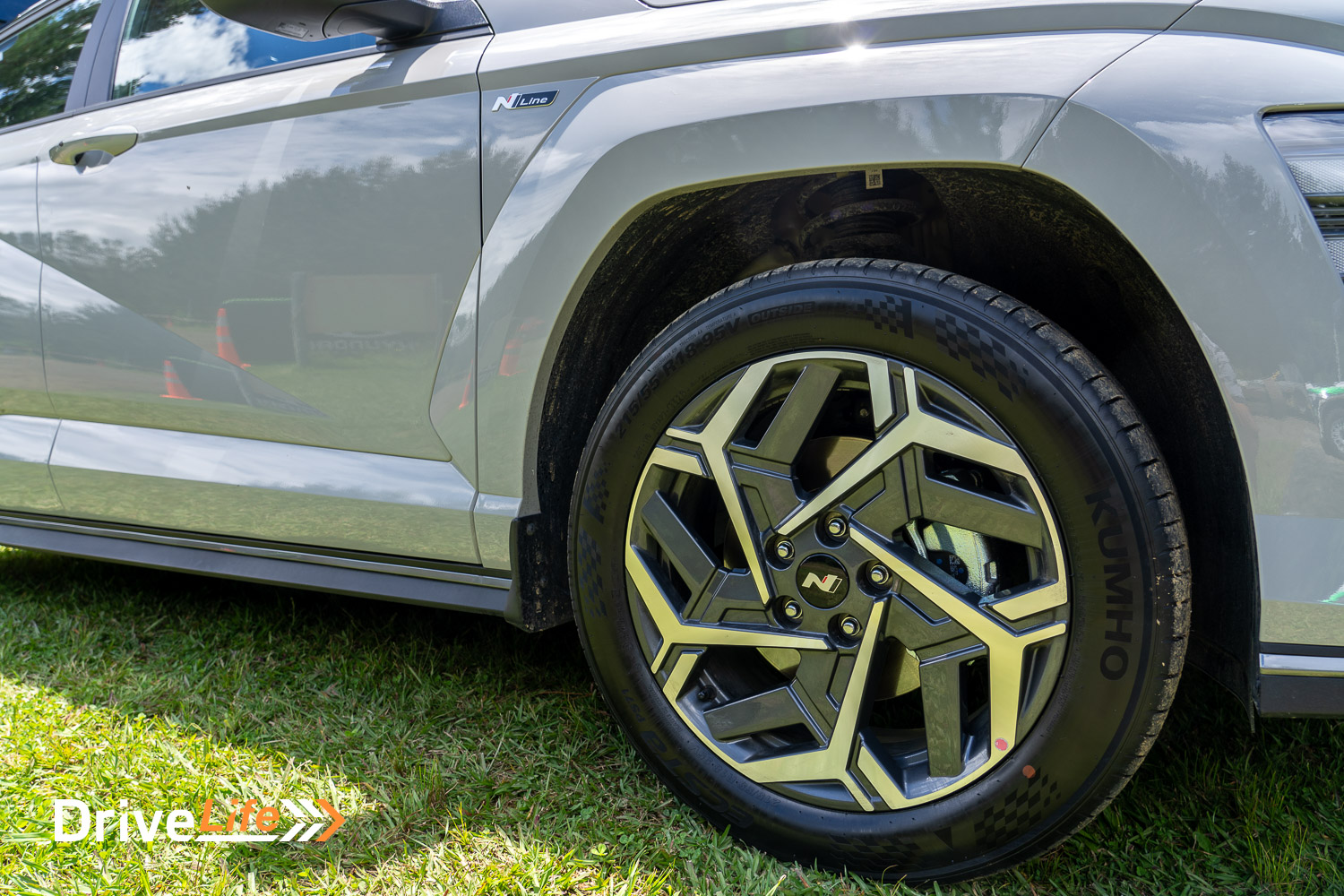
2023 HYUNDAI KONA: KONA & THE COMPACT SUV SEGMENT IN NEW ZEALAND
According to Hyundai, the Compact SUV segment has gone from 60% of all passenger vehicle sales in 2018 to 78% in 2023, and the Compact SUV segment takes 30% of total market share. The Kona currently sits in third place in the market segment, after the Mitsubishi Eclipse Cross and the Toyota Corolla Cross.
Hyundai is happy to state that this year, they have sold more hybrid Konas than petrol or EV models. Nearly 50% of all compact SUVs are electrified somehow, they say.
2023 HYUNDAI KONA
While the current Kona has not really dated at all and certainly looks sharp, Hyundai has gone further to stylise the car to their current design language, and it really pops out from other cars on the road. The front in particular is futuristic, with a seamless horizontal LED light bar across the front. This carries the daytime running lights on most models and is completely lit up on the top-spec N-Line.
At the front, all models have active air flaps that we first saw on the current-gen Kona EV. The headlights have been moved down and out, to make the car seem wider and to aid that futuristic design.
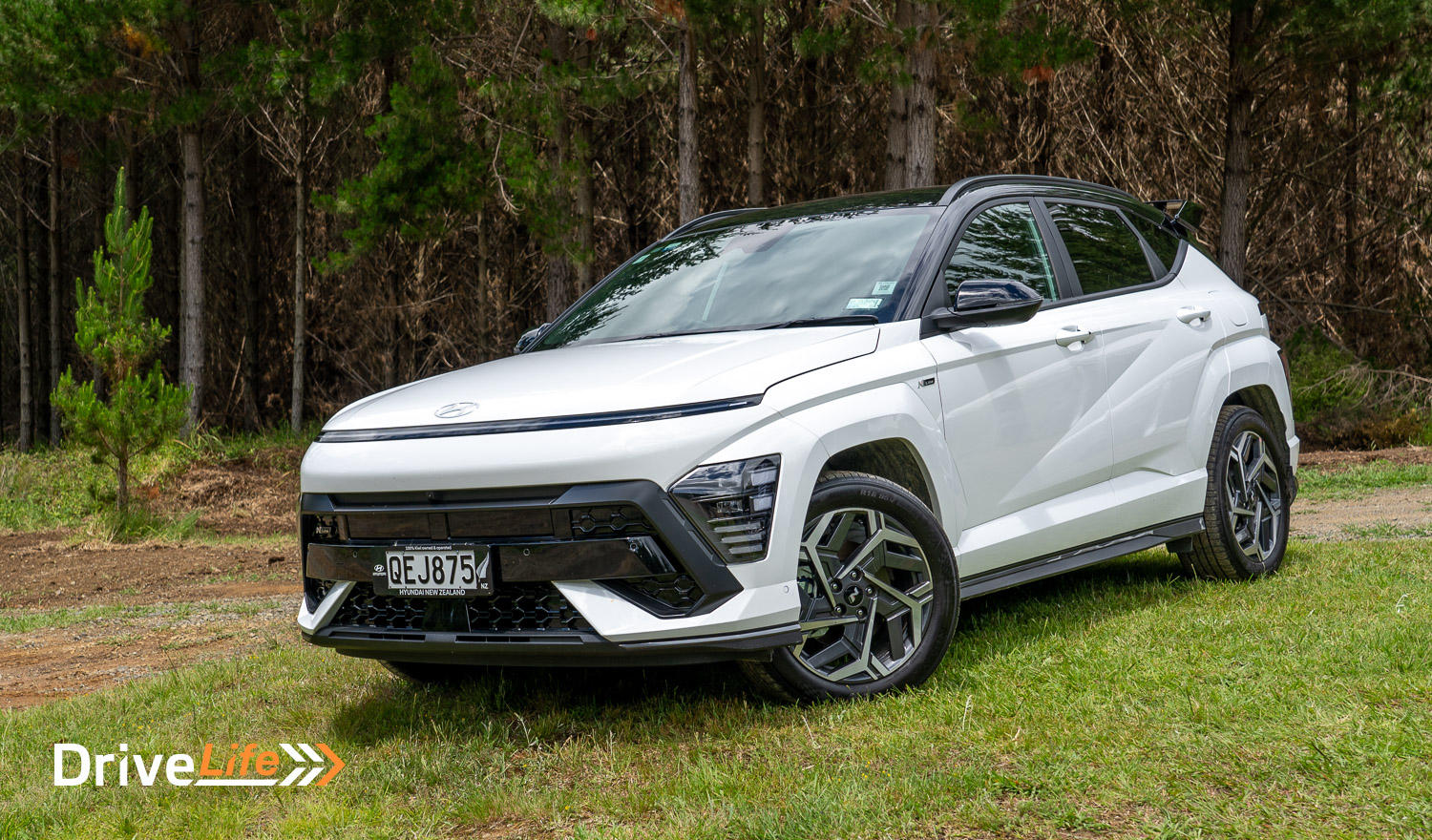
New for 2023 is dark grey cladding on the sides of the car (depending on the model), and at the rear there is a full-width light bar that looks amazing from behind. This light bar’s design is a mirror of the one on the front of the car. The 2023 Kona’s taillights have been moved down and out to reflect the headlight’s positioning. There’s a silver skid plate at the rear, but it’s made of plastic so not something you want to test out. A roof spoiler is standard across all models.
2023 HYUNDAI KONA: MODELS
It feels a little confusing, but New Zealanders get to pick from four Kona trim levels and four different drivetrain options:
- KONA Active 2.0-litre MPI – $42,990
- KONA Active 1.6 GDI Hybrid – $52,990
- KONA Active N Line 2.0-litre MPI $49,990
- KONA Active N Line 1.6 GDI Hybrid $59,990
- KONA Elite 2.0-litre MPI $TBA
- KONA Elite 1.6 GDI Hybrid $TBA
- KONA Active N Line Limited 1.6 GDI Turbo $64,990 (AWD)
- KONA Active N Line Limited 1.6 GDI Hybrid $65,990
All 2.0-litre MPI models use a CVT transmission, with power output at 110kW and torque listed 180Nm. Fuel economy is stated at 7.3L/100km.
The hybrid versions run a 1.6-litre GDI engine combined with a very small drive battery and an electric motor that adds 32kW of power and an extra 170Nm of torque. This means a total combined output of 104kW of power and 265Nm of torque. This model is significantly more fuel efficient than the 2.0-litre, at 4.3L/100km. The transmission in this model is a 6-speed dual-clutch (DCT).
The single model that has a turbocharger uses the same 1.6 GDI engine but with power now at 146kW and torque at 265Nm. Hyundai suggests fuel economy of 8.5L/100km. This model uses an 8-speed automatic transmission and the car is the only Kona model that is all-wheel drive.
The new EV model of the latest Kona will not be available until Q1 of 2024, but Hyundai says they have plenty of stock of the current gen.
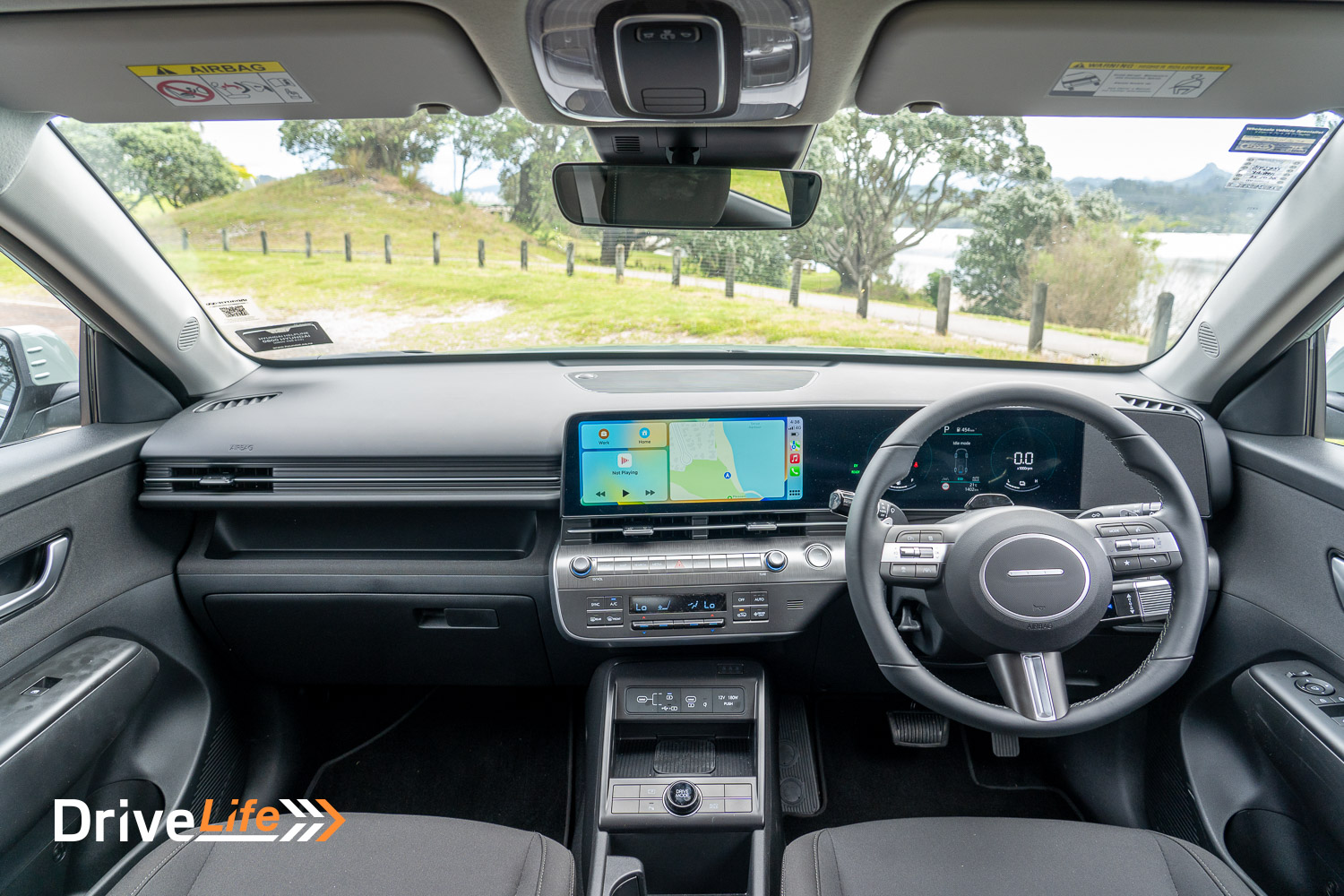
2023 HYUNDAI KONA: DESIGN
With “N-inspired styling” and “sporty bumpers, the N-Line definitely looks the best of all the models. In saying that, you need to park each model alongside the others to pick out the differences – even the base model looks sharp and attractive.
The N-Line has unique side skirts, a rear wing spoiler, dual exhaust tips and 18” or 19” rims, depending on the N-Line model.
There are now ten colours in total, with 4 new colours added to the palette. A two-tone roof is available at extra cost. All colours are available across all models.
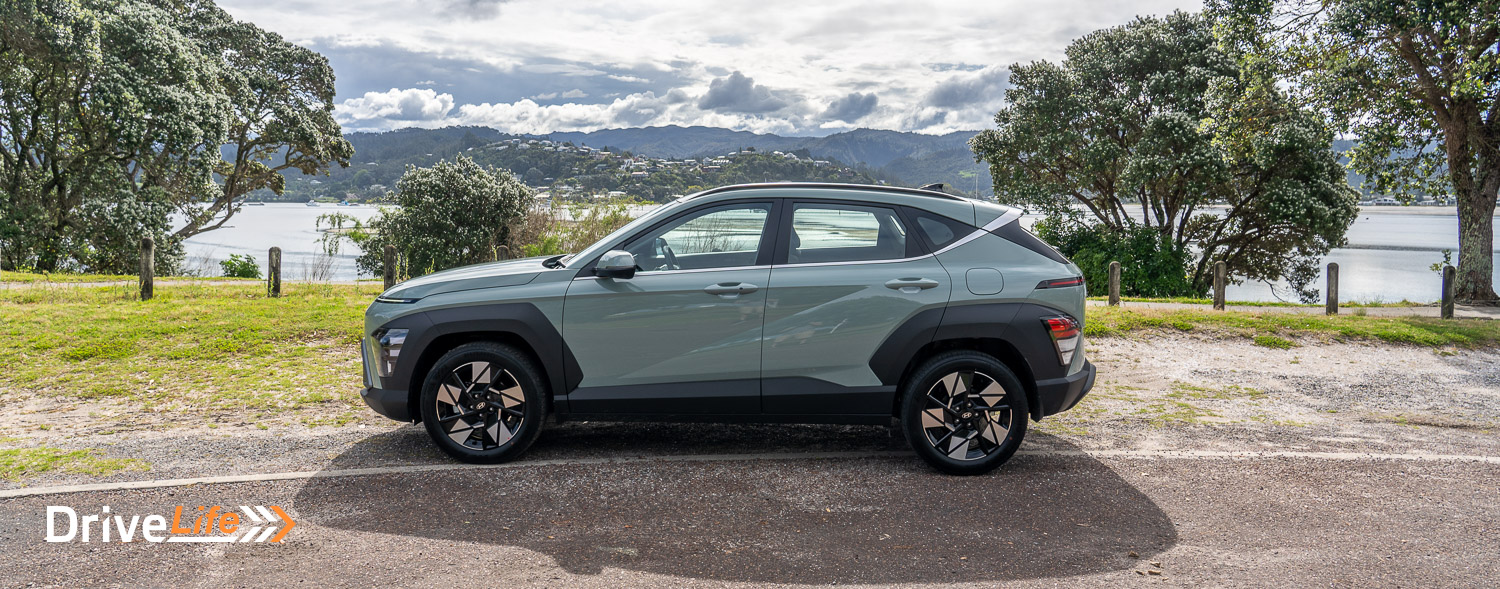
2023 HYUNDAI KONA: INTERIOR
Not only has the body been redesigned substantially, but the interior of the new Kona is a very different place. Those twin 12.3” screens dominate the interior, and look fantastic.
The ‘old’ transmission buttons of the current-gen Kona have been replaced by a stalk on the right-hand side of the steering wheel, similar to the Ioniq 5.
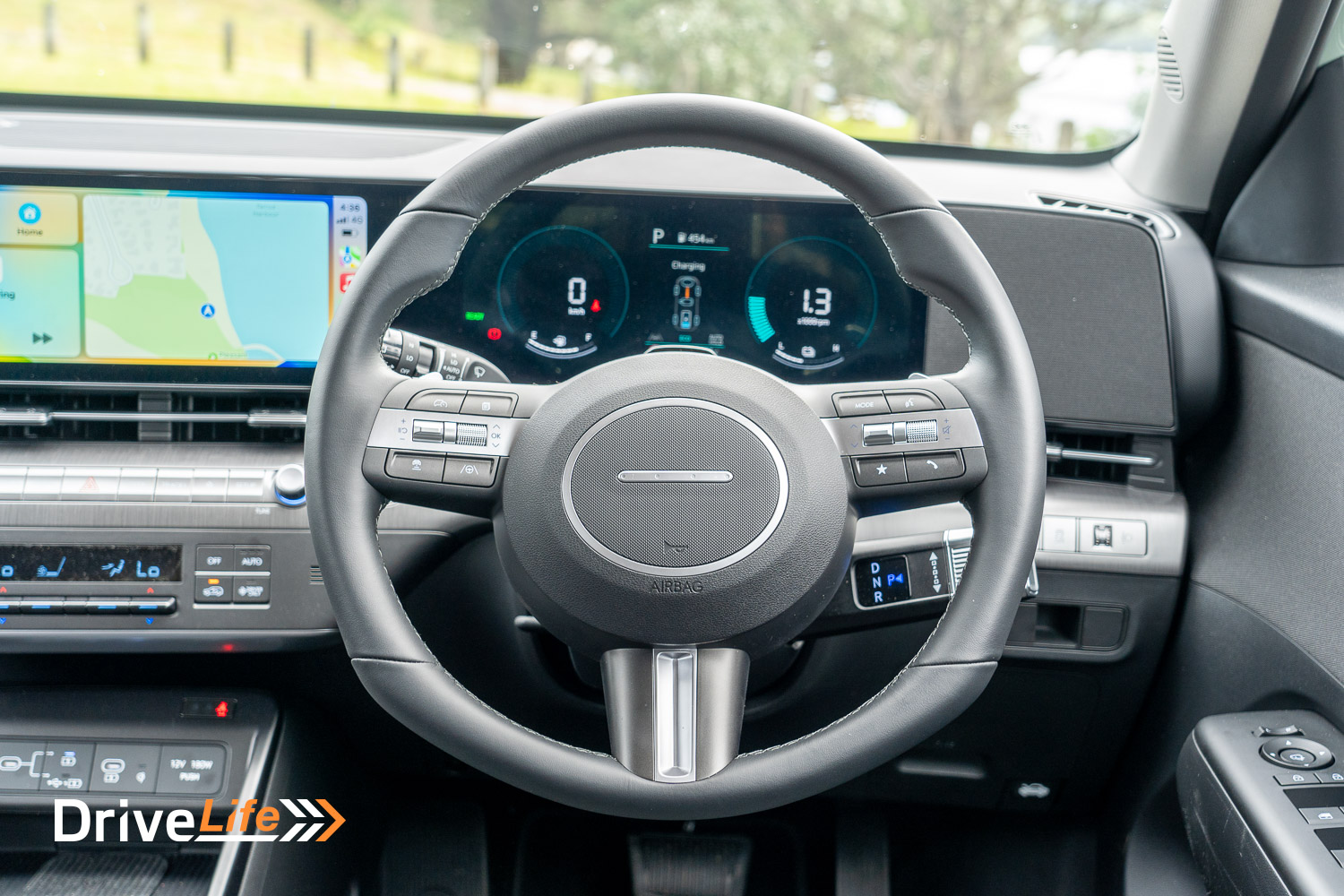
The rear seat is a curveless design to allow for more width, and the rear seat also has a two-step recline function. There are air vents back there too, along with USB-C ports.
The interior on the N Line also has N-inspired styling and there is Alcantara and leather thrown about. You’ll also see red stitching on the seats and other places, as well as a perforated leather steering wheel. There are “active red highlights” which is LED lighting to you and me. The N Line models also have alloy scuff plates and alloy pedals.
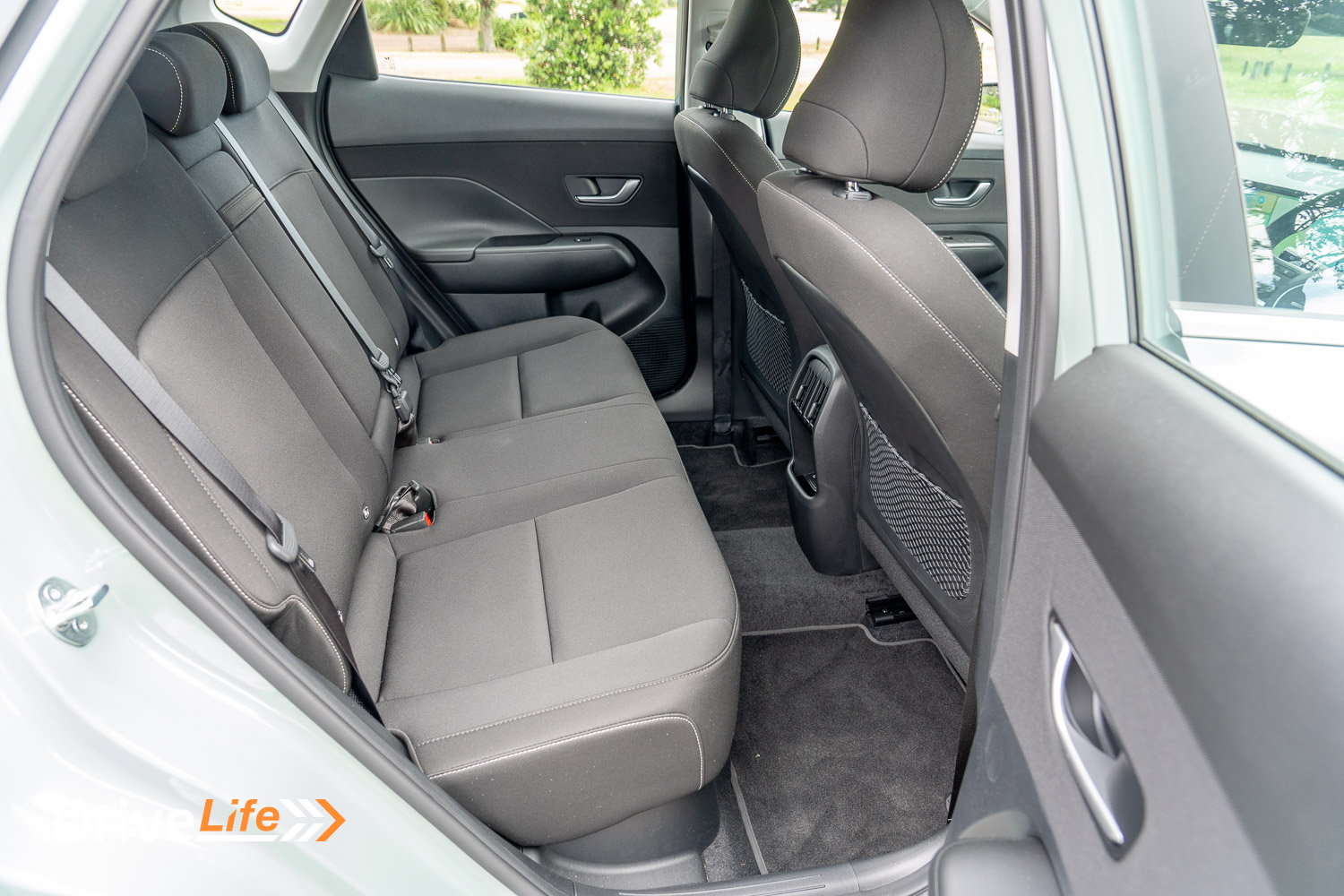
2023 HYUNDAI KONA: DIMENSIONS
No surprise that the Kona has let its belt out – has there ever been a new model of any car that’s smaller? Probably not. The new Kona is 145mm longer, 25mm wider and 20mm higher, although ground clearance remains the same at 170mm.
The new model’s length is exactly middle in size between the outgoing Kona and the current Tucson, with towing rated at 600Kg and 1,300Kg braked.
The interior has grown in space, with 34mm more front shoulder room and 77mm rear leg room. Boot space is up to 407 litres and thankfully, all models have a spare wheel.
2023 HYUNDAI KONA: SAFETY FEATURES
Along with most other manufacturers, Hyundai has taken the opportunity to add even more safety features to the new Kona.
In Hyundai-speak, that’s “Hyundai SmartSense” – their raft of anything related to safety and their cars.
The new Kona has forward collision assist that can now detect motorbikes and cyclists.
A blind spot view monitor is new, so the outside mirrors relay what’s in the car’s blind spots when changing lanes. There is also forward attention warning, blind spot collision avoidance, and a surround-view monitor amongst a bunch of other safety items. We’ll cover these off in a review of the car.
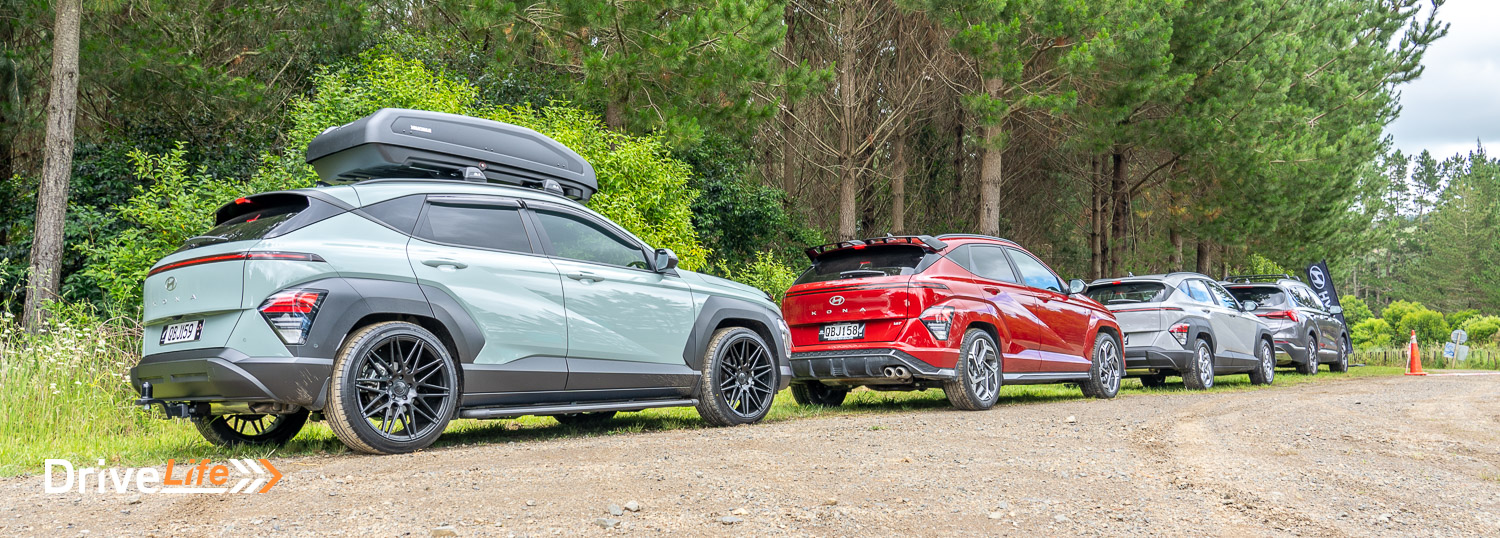
2023 HYUNDAI KONA: CHASSIS
The suspension has been updated and improved, and the body of the Kona is made safer with chassis strength rigidity up 10%. The bushings have been improved and the same goes for overall braking performance.
Hyundai have gone to lengths to improve NVH and the car’s body improvements have led to a reduced drag coefficient of 0.30.
2023 HYUNDAI KONA: ACCESSORIES
There are a bunch of new options to kit out your Kona and personalise it, including a roof box that can add an extra 470 litres of space.
There are roof racks, a bonnet protector, 20” rims, black side steps, headlight protectors, and a cargo bay liner.
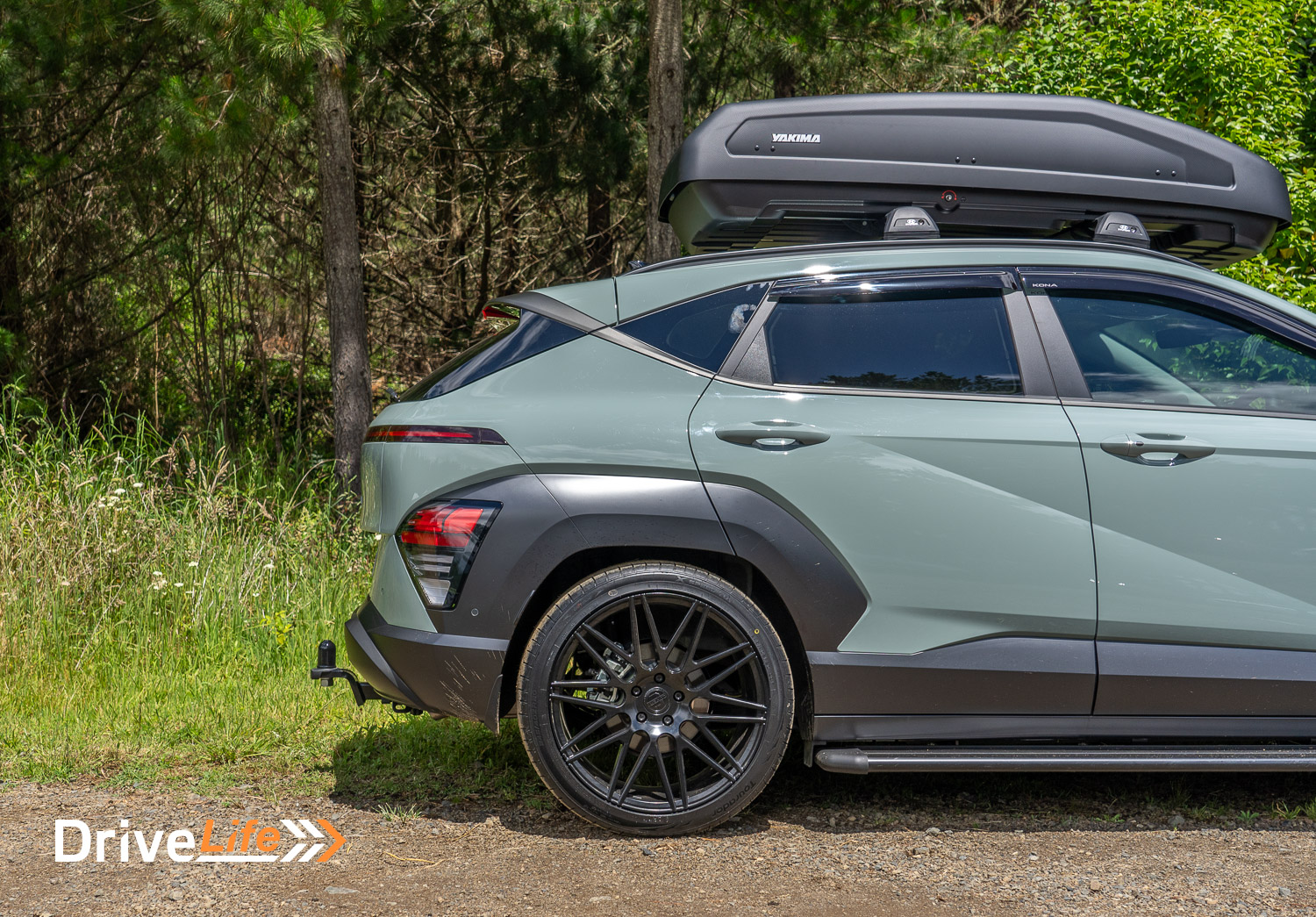
2023 HYUNDAI KONA: DRIVE TIME
In the flesh, the new Kona looks so much bigger – almost the size of the previous generation of Tucson.
My first car was the top-spec N Line Turbo and the upmarket interior certainly showed that Hyundai is moving the Kona into a new premium brand. The materials are excellent, and the high-end features like heated and cooled seats and a heated steering wheel are obvious.
The drive selector on the right-hand side of the steering wheel wasn’t too much of a chore for me, but I had already spent a good amount of time in the Ioniq 5 so was second nature – but I could see how this could confuse a few people, initially at least.
On the motorway in the Kona N Line, the car is definitely more refined than the previous generation. Not that the previous gen was not refined, but Hyundai has really lifted the bar with the new Kona. All the models I would drive have little wind and road noise, while tyre noise is a little high on all surfaces, even on tarseal. The ride quality is above average, meaning a car that punches above its weight – so far.
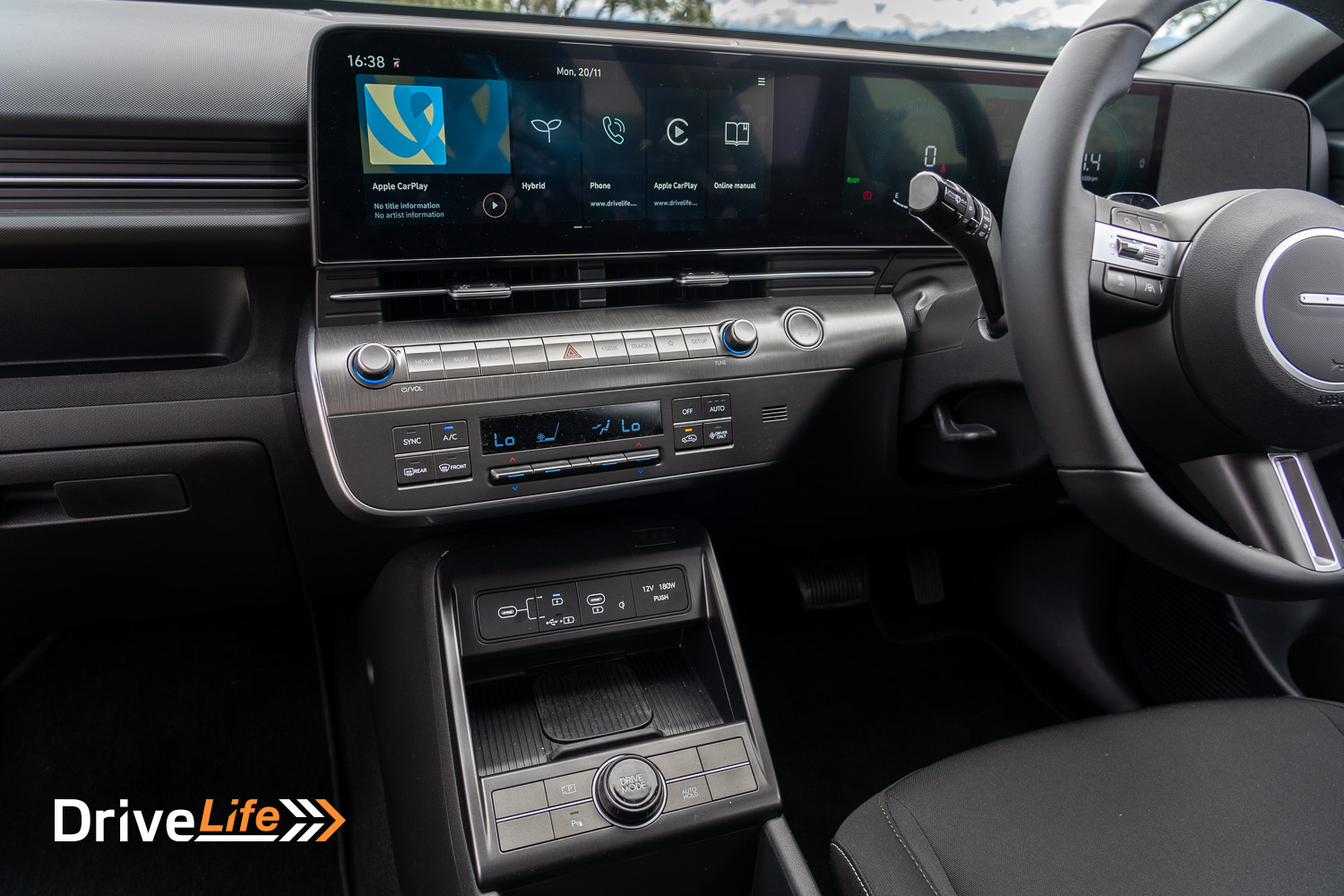
The new system of watching the driver’s eyes is a little overbearing. It’s not as bad as say a Subaru’s Driver Monitoring System but it would be nice to have a little adjustability over its settings.
All too soon I had arrived at Maramarua Forest, and Rally Drive NZ’s track there. Of course, that would almost certainly mean that Hayden Paddon would be there too – and he’d be taking each of us for a quick drive around a 5km rally circuit in his well-used but still awesome Hyundai i20 rally car.
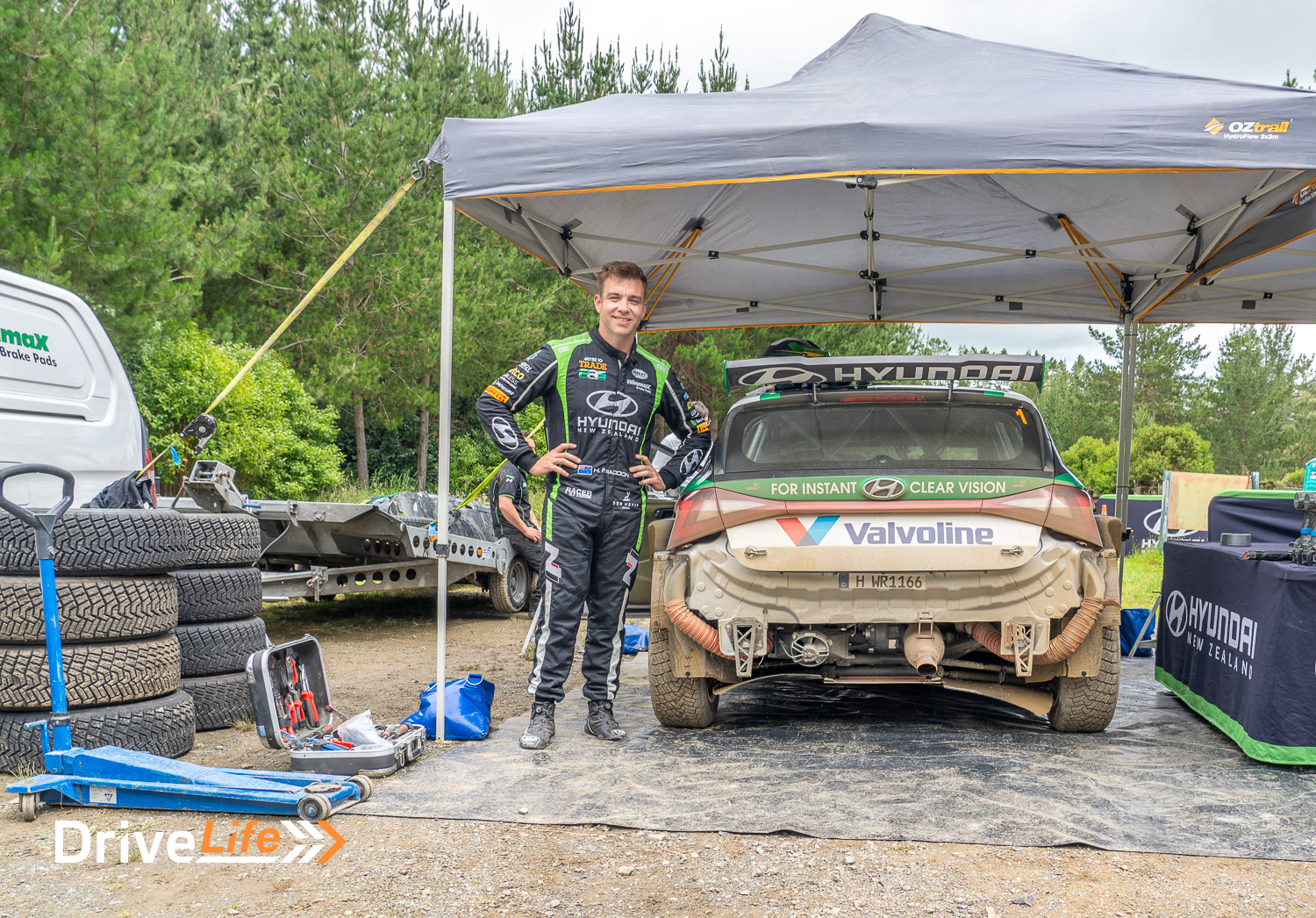
He mentions that he hasn’t driven this track in 10 years, so those who would be doing their runs after lunch would get the fastest ride of the day. Lots put their hand up to go first, before lunch, but wanting absolute speed I decided to go almost last.
Come lunchtime it was time for a change of tyres. The car had done 7 laps by this stage, and the tyres were stuffed. Hayden mentions after the next 7 runs here, they’d have to fit a new set of tyres again for the car’s next event. An expensive sport.
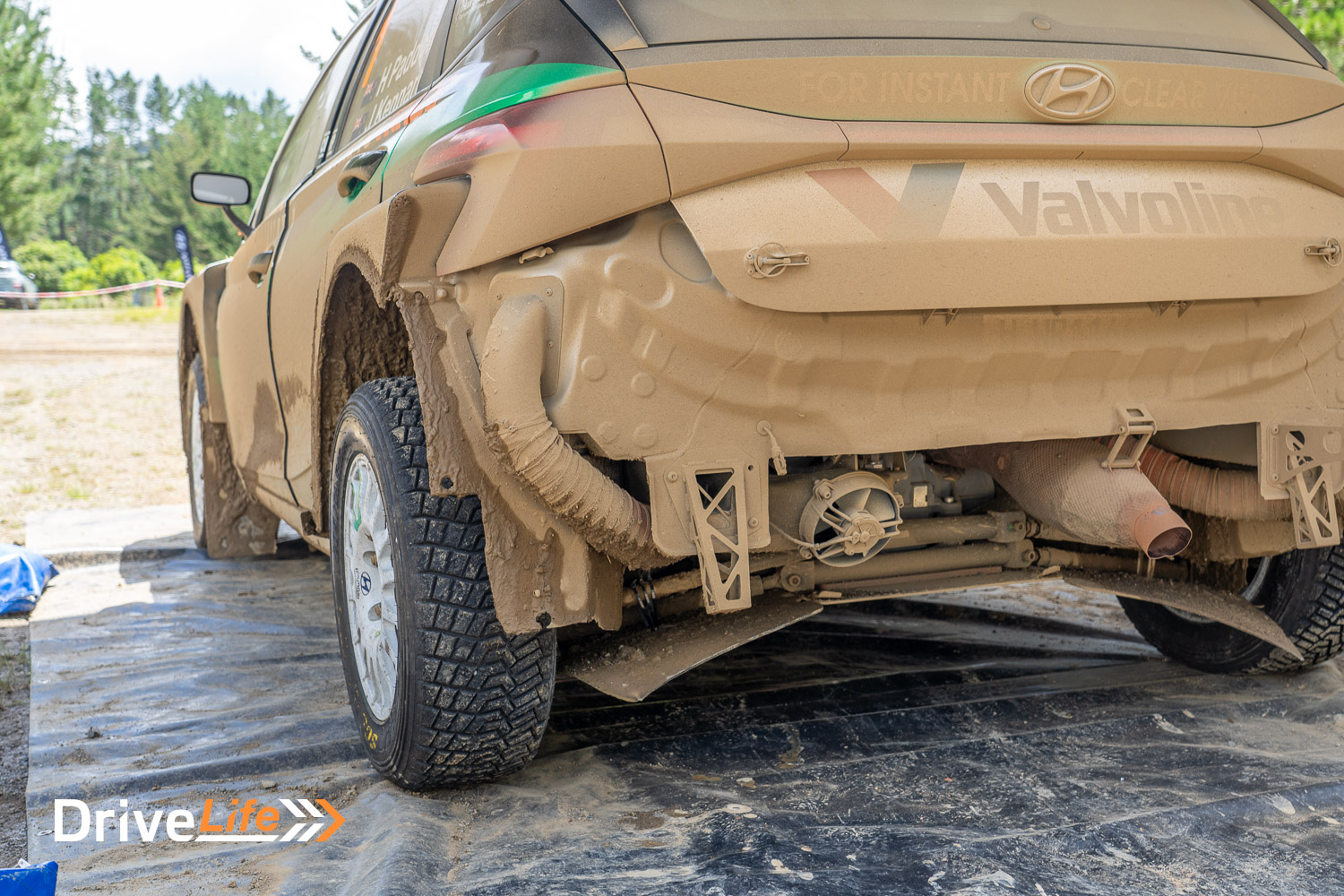
Once it was my turn to ride, suiting up and a quick driver briefing went quickly and it was time to fold myself down into the i20. There’s no sound deadening so it’s hot, noisy and excellent. Hayden drove us around to the start point and nailed it from a standing start. The ride was incredible, and we hit 172km/h on the metal road with the car barrelling down a short straight. The track here is unforgiving; there are pine trees very close to the sides of the road, so any mistake would mean a serious accident.
But Hayden doesn’t seem to make mistakes, and it’s poetry in motion to watch him working the car, so utterly smooth in every movement of the wheel. It’s fantastic to watch and experience.
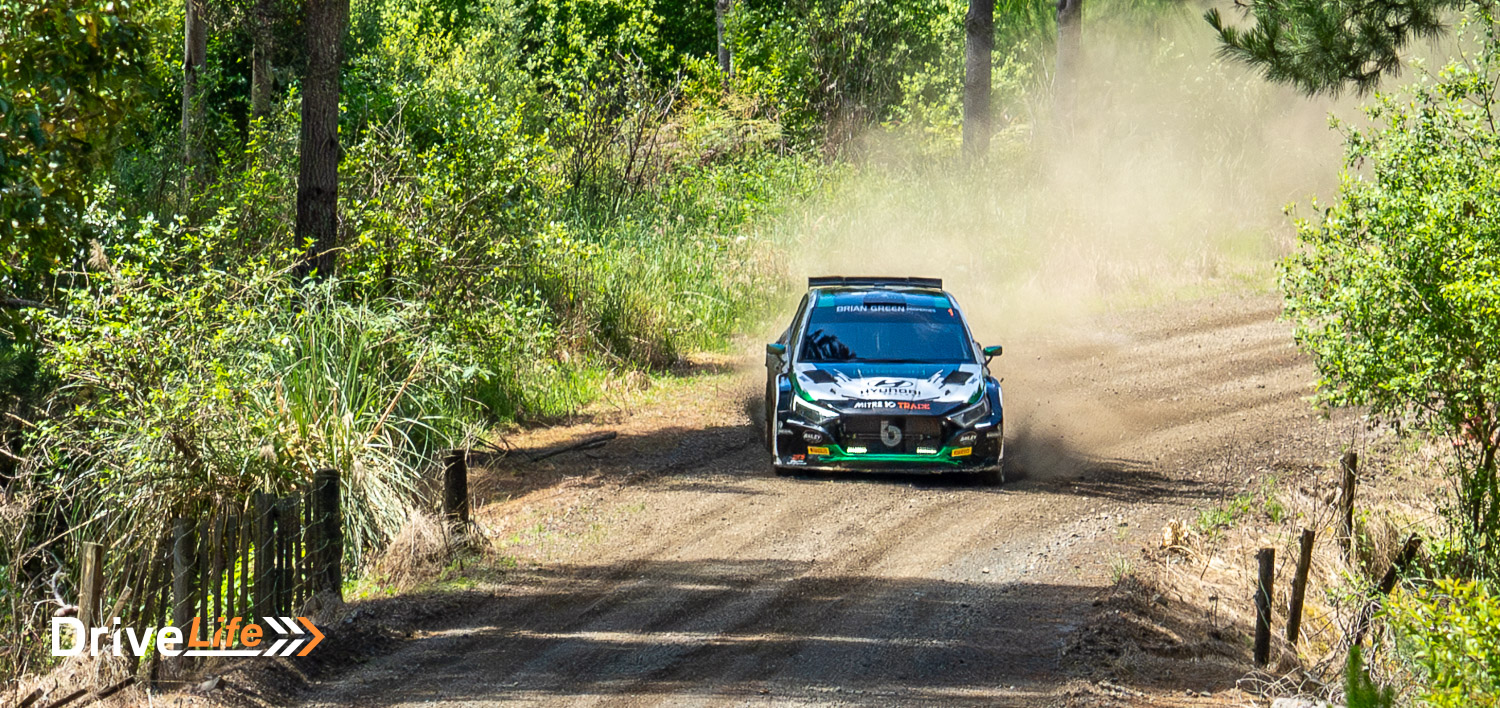

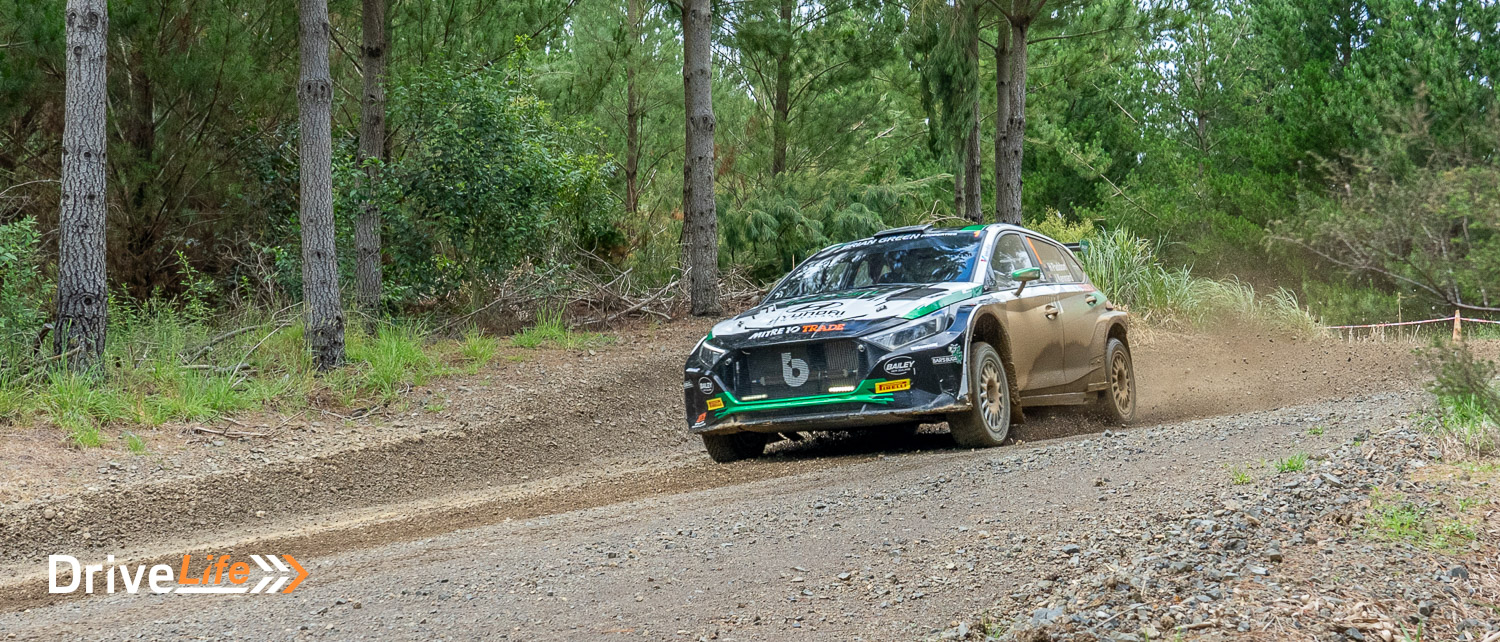
We hit the road again, this time in the cheapest hybrid Kona, the Active. I must admit, the Active Hybrid is fairly pricy at $52,990 and equipment levels seem sparse with lots of blanking plates around the dash and console. But it drives almost as well as the N Line, as far as chassis dynamics go.
The transition between hybrid and the engine starting is seamless, as you would hope. This model was finished in Mirage Green and I’ve got to say the colour really grew on me. This would end up being the same car I would drive back to Wellington.
The screens across all models are the same, so every Kona gets those two large 12.3” digital screens, and they look excellent. The clarity is great too, and the user interface is simple. Those not familiar with Hyundai’s infotainment will pick it up quickly.
The next day, I took the range-topping N Line Hybrid back to Auckland. Again, the car impresses with its refinement and driveability. We managed to get on some nice, twisty roads including the drive from Whitianga to Kūaotunu which includes some really gnarly bends. The car felt composed and planted on the bends and for a compact SUV, you can’t expect too much more than that.
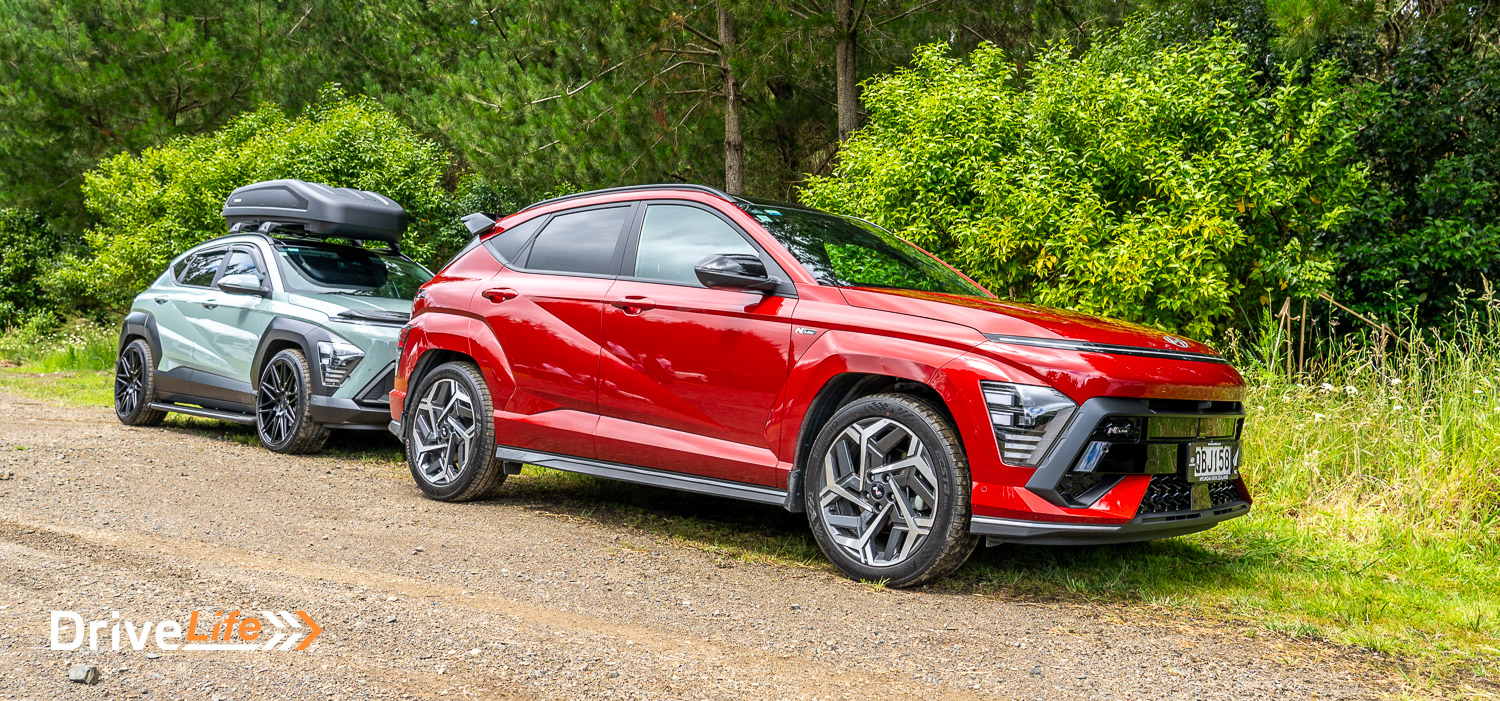
2023 HYUNDAI KONA: 600km DRIVE HOME
On arriving back in Auckland and having to go back from the airport to Hyundai, I picked up the Active Hybrid Kona and went straight for the motorway – at dead on 5pm. That meant lots of traffic, and it took me over 45 minutes just to get from Mt Wellington to Bombay. After that, it was pretty plain sailing.
I’ll admit I used the Kona’s adaptive cruise control for most of the trip back; I had a long way to go so no point in working any harder driving. The Kona’s self-steering helped here too; we’ve said before – having steering assistance can reduce driver fatigue and this theory was proven well on a 600km straight drive.
I did notice that in the hybrid, passing trucks and other slower traffic saw the car run out of puff at higher rev ranges. No doubt the turbo model doesn’t suffer from this. It wasn’t bad and the hybrid has some nice low-down torque, but I had to plan overtaking manoeuvres well.
I was hoping to make it home on one tank of gas but didn’t want to risk it. I gassed the car up (it takes 91 fuel) in Bulls, having driven 471km and with around 90km range to go.
On getting home in the early hours, I had driven 623km and fuel consumption sat at 5.3L/100km. That’s pretty good when you consider that hybrids are more economical around the city than on a long highway trip.
Overall, I’m impressed with the new Kona and it’s now been handed off to Alistair to carry out our normal full review. Hopefully, the model continues to sell well for Hyundai.
The all-new Hyundai Kona is available in dealerships now, with the electric version arriving early in the new year.
